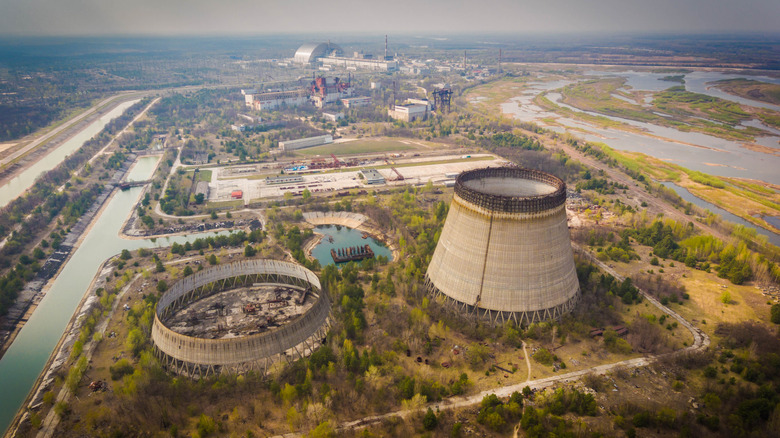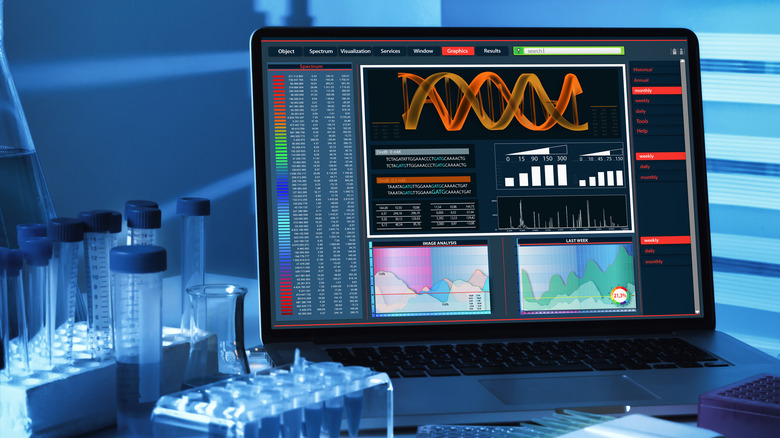Chernobyl Studies Answer Questions About Radiation And Genetics
It has been 35 years since that awful day, but the name "Chernobyl" still conjures hellish images in the mind of almost everyone who knows of the disaster. A malfunctioning reactor led to an explosion a little before 1:30 AM, and set off one of the worst nuclear accidents in history. Debris rained down on neighboring fields and towns, leaving countless Ukranians at risk of dangers that could only really be guessed at.
Scientists at the time, thankfully, had the forethought to collect samples and contact information from plant workers and members of the cleanup crews. Later, when diseases began to emerge that were undoubtedly tied to the explosion, they gathered still more samples. They weren't sure exactly what to do with the samples at the time, but they hoped that one day scientists could use them to learn as much as possible about nuclear fallout before an even greater disaster created a new need for the information.
That day, it turns out, has come. The journal "Scientific" published two papers this year detailing different effects of exposure to Chernobyl radiation. Among the authors for both was Dr. Stephen Chanock, M.D., director of the National Cancer Institute's Division of Cancer Epidemiology and Genetics. When speaking to WIRED, he highlighted the importance of both papers.
"Each of these are very strong examples of what we've learned from situations that we never want to visit again."
Hope for the future
The first paper, titled "Lack of transgenerational effects of ionizing radiation exposure from the Chernobyl accident" looked at 130 children born between 1987 and 2002, between a few months and 16 years after the accident. All of the children were born to people who either worked at the plant that night and were exposed to the accident or people who worked in the cleanup crews.
Researchers wanted to determine if these children had a higher rate of genetic mutations than average as a result of their parent's or parents' radiation exposure. It is important to note that not all genetic mutations are bad. A 2010 paper published in "Philosophical Transactions" explains that some may even be beneficial since small "germline" mutations are the mechanism for evolution.
In the case of Chernobyl, researchers knew that abnormal mutations had taken place in at least one parent as a result of radiation exposure. They then used genetic sequencing to study the genetic codes of children born after the parents were exposed. And what they found actually surprised them, according to Chanock.
The children had no abnormal genetic mutations. Whatever happened to their parents' DNA was not passed down to them, regardless of whether they were born months after the accident or more than a decade later. The genetic effects of the accident stayed with the exposed generation, giving hope for any other exposed populations.
The genetics of a disaster
While the first paper may give hope for populations exposed to radiation, the second offers insight into the nature of the immediate effects radiation has on human DNA. Titled "Radiation-related genomic profile of papillary thyroid cancer after the Chernobyl accident", the paper focused on people exposed first-hand to Chernboyl's radiation and the specific type of thyroid cancer many developed as a result.
The American Cancer Society lists radioactive iodine as a possible treatment for thyroid cancer, specifically targeted use of high dosages. The treatment kills thyroid cells. This in turns kills the cancer. It's a highly effective treatment for the majority of thyroid cancer cases, which are largely caused by single-point genetic mutations.
Thyroid cancer caused by Chernobyl, however, didn't seem to behave like thyroid cancer, and researchers wanted to know why. Using the samples taken by earlier scientists, they dove into the genetics of old tumors. Over and over again they found the same thing, providing a clear picture on how prolonged generalized exposure to radioactive iodine affects genes. In short, it shreds them. The radiation from Chernobyl splits the DNA double helix of thyroid cells and ultimately leads to thyroid cancer.
The two papers explore vastly different outcomes of the Chernobyl disaster, both marking the 35th anniversary of the disaster. One brings hope and the other finally explains the mystery of why Chernobyl-based cancer seemed to work differently. They are only the beginning of what scientists hope to learn from the Chernobyl samples. And they stand as reminders of the long-lasting effects these disasters can have.


